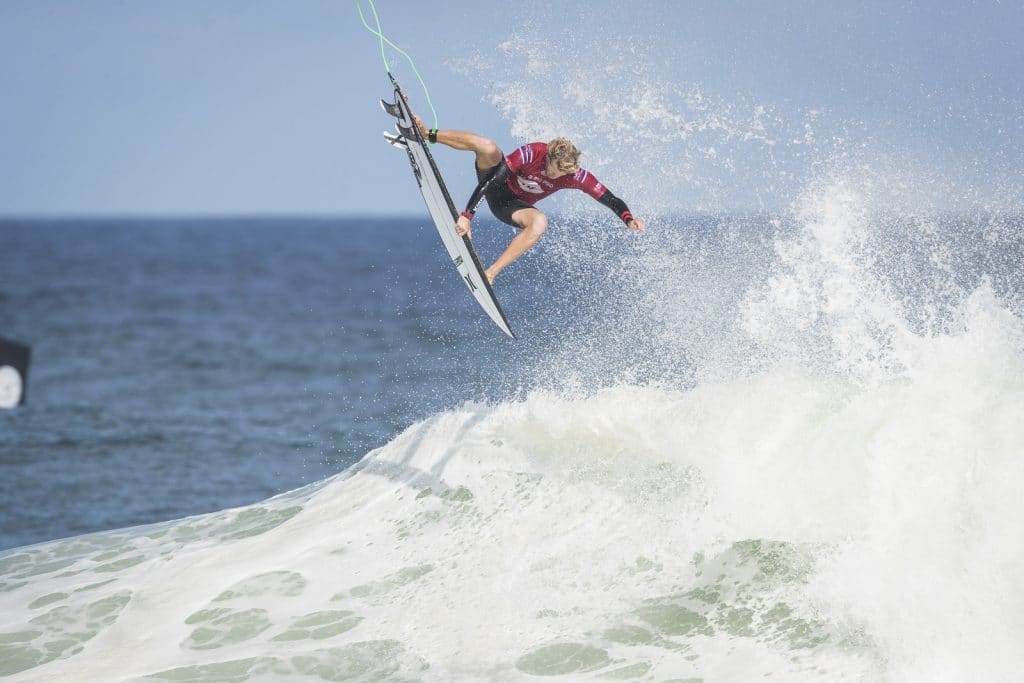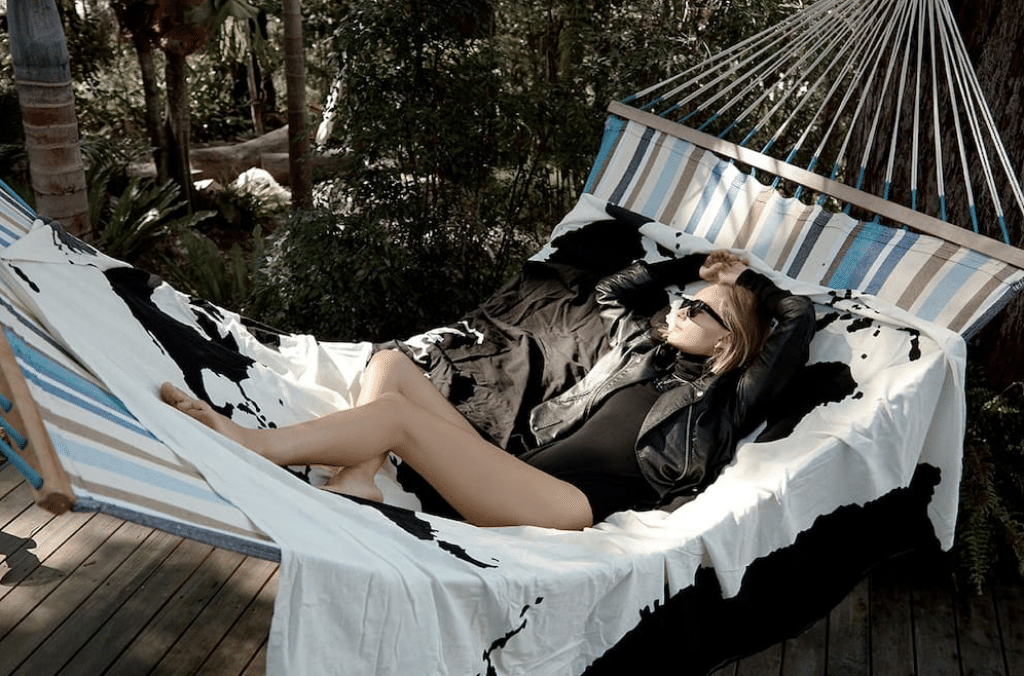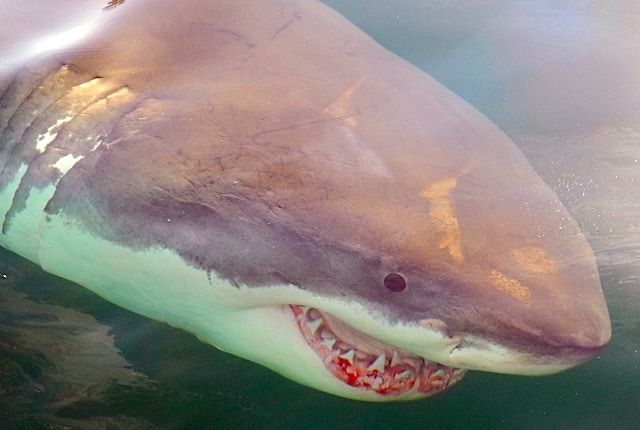Remember when Andy and Bruce and Rasta wore magical plastic bracelets?
(Editor’s note: Seven years ago, I employed Lewis Samuels to drive a dagger through the heart of the charlatans at Power Balance, a Californian company that said its plastic bracelets gave wearers super powers. Bulllshit, of course. But the number of athletes, including surfers, who wore ’em, who believed it, who were evangelistic in their support for ’em was staggering. One surf company who didn’t buy into Power Balance was Rip Curl. They were approached by Power Balance and asked if they’d sew the little holograms into their suits. Rip Curl laughed ’em out of the room. Now, read, Lewis at his investigative best,)
The heart of the product is a diminutive holographic Mylar sticker, about half an inch in diameter. Embedded in the sticker, reportedly, is an electrical frequency. According to Power Balance, one of the companies that sell these stickers, this frequency, when it comes in contact with your body’s energy field, produces the following benefits: “Faster synaptic response (brain function), enhanced muscle response (in both fast and slow twitch tissues), increased stamina (better oxygen uptake and recovery), more flexibility (faster recovery) and vastly improved gravitational balance.”
Translation: buy this holographic sticker, and you’ll surf better. Andy and Bruce Irons endorse the product, as do Dave Rastovich and Brett Simpson. There are video testimonials from members of Da Hui and Da Wolfpak. Billabong recently rolled out bracelets with holograms beneath the Billabong logo as part of a licensing agreement with Power Balance’s main competitor, EFX. According to EFX’s president, “In surfing, the product is everywhere.”
Seriously?
I went on to hypothesise that Andy, Bruce and Rasta believed in Power Balance because they had the mental capacities of small children, and speculated they were perhaps, like cats, also impressed by shiny objects in general, prone to chase wadded-up balls of tinfoil across the floor.
When I first heard that a holographic sticker could improve my balance and cure my ills, my response was, “Bitch, please.” Literally – I wrote an opinion piece for PostSurf.com titled “Bitch, Please…” in which I suggested that Power Balance believers were “bat-shit crazy and/or gullible.” I went on to hypothesise that Andy, Bruce and Rasta believed in Power Balance because they had the mental capacities of small children, and speculated they were perhaps, like cats, also impressed by shiny objects in general, prone to chase wadded-up balls of tinfoil across the floor.
I was extremely skeptical about the efficacy of holographic stickers. Do you believe in magic? I don’t. But, if you want to believe in magic, all you have to do is believe; magic works on faith, suspension of disbelief. The trouble is, I stopped suspending my disbelief in the surf industry long ago.
But everyone deserves a fair shake, and with that in mind, I went on a mission to uncover the truth about these performance-enhancing holograms that are infiltrating the global surf scene.
The Test
As the old expression goes, the proof is in the pudding. One of the key selling points of Power Balance and EFX is “The Test,” in which a representative of the company proves the product’s efficacy via a few simple balance tests. Whenever I expressed skepticism to a proponent of the product, they’d say something like “I used to doubt it too, but then I did the test, and it works. I don’t know why, but it works. Try it.You’ll see.”
The demos work like this: a company rep has you stand with feet together and presses down on your cupped hand until you go off balance. Then, they give you a Power Balance bracelet, and try to push you off balance again. Mysteriously, you’re more balanced the second time around. Search for Power Balance on YouTube and you can find multiple examples of surfers who are convinced after undergoing balance tests.
In one video, filmed in a North Shore yard, Jamie Sterling marvels that, “Power Balance has some kind of secret that’s keeping me glued to the floor.” Kamalei Alexander comments, “I’m convinced it works.” Eddie Rothman of Da Hui goes further: “Dis ting works good. Really good! I’m gonna eat ‘em. I’m gonna swallow this fucking thing.”
Convincing stuff – who in the world would dare con Eddie Rothman, and then post the video on YouTube?
Recently, I did the balance test myself with Mike LaBrae, a rep for Power Balance. Mike pushed me off balance easily the first time. Then, he placed a bracelet on my wrist, seemingly applied even more force, yet had a much harder time pushing me off balance.
Proof, right?
I discussed the experimental validity of these balance tests with A.L. Stier, who does her doctoral research in U.C. Berkeley’s Psychology department. Stier shook her head after watching the video.
“They’re not actually testing the efficacy of the product,” Stier explained. “You can’t tell whether the superior performance the second time is because of the hologram or because the subject got some practice on the first trial.”
Stier noted that counter-balancing — that is, alternating whether the subject did the test first with or without the hologram — would prevent this problem. I’d heard this same complaint from a skeptical participant when I watched a demo.
“You don’t know how hard they’re going to push the first time,” he noted. “The second time, you’re ready for it, so you’re more balanced.” Stier saw a second major flaw in the balance tests. “The subjects know when they are being tested with versus without the stickers. The only way to reduce a placebo effect to make the trials ‘blind’: keep subjects from knowing if they are using the product or not.”
Placebos’ efficacy are related to the perceptions and expectations of a subject. If an inert substance is viewed as helpful, it can improve a patient’s condition – especially their subjective perception of their condition. Simply put, athletes might feel their balance improve when using holograms simply because they expect it to improve. If they believe it works, it does work.
When I saw Mike LaBrea demo Power Balance, he started with a long personal testimonial – a story of how he’d started out a skeptic until Power Balance improved his balance, cured his back pain, improved diabetes in family members, and cured his wife’s restless leg syndrome.
The final issue with balance tests is that the demonstrator (usually a representative of the company) might vary the amount and direction of force they use to push the subject off-balance. “In order to take the results seriously, they need to reduce the influence of demonstrator bias. The balance test needs to be double-blind: the demonstrator shouldn’t know if the subject is using the hologram either,” Stier noted. For instance, if you push slightly out during a balance test, instead of straight down, it is much easier to knock a subject off balance. A demonstrator might consciously or unconsciously “improve” the balance of a subject by pressing straight down when he or she has a hologram on.
The Horse’s Mouth
Trends are an interesting thing. The concept of cool is spread by word of mouth, and for most surfers the endorsement of a trusted friend or hero is more important than the fine print.
There are testimonials from Rasta and Bruce Irons. In one video, at a tradeshow, Jeff Clark and Mikala Jones express their belief. The entire marketing team from Reef follows suit, along with Sanuk Sandals founder Jeff Kelley, who proudly notes he was the first to put Power Balance in a sandal model.
When I first began researching Power Balance, I was shocked to see how many surf industry titans – athletes and executives among them – were happy to endorse Power Balance, on video, after a quick demo. There are testimonials from Rasta and Bruce Irons. In one video, at a tradeshow, Jeff Clark and Mikala Jones express their belief. The entire marketing team from Reef follows suit, along with Sanuk Sandals founder Jeff Kelley, who proudly notes he was the first to put Power Balance in a sandal model.
However, when I started performing interviews for this article, surf industry insiders were much more hesitant to discuss Power Balance on the record. Dave Rastovich and Jamie Sterling did not return emails on the subject. Blair Marlin, manager of Bruce and Andy Irons, explained that in light of my Power Balance posts, the Irons were choosing to decline my interview requests. Marlin offered a bit of context – Bruce and Andy were “only trying to help out friends,” and it was “safe to say they’re not cashing in on it.”
Later, a Power Balance employee confirmed that athletes featured on the Power Balance site only receive “small incentives to make their endorsement official.”
Interestingly, some of the only people willing to talk on record about hologram frequency-embedded technology were the owners of the companies. After a bit of back-and-forth with Power Balance’s PR agency, I arranged an interview with Troy Rodarmel, who co-founded Power Balance with his brother Josh. Later, I spoke with Randy Largent, president of EFX, a company selling a similar product, created by an ex-Power Balance employee.
I was interested to hear about how the product worked, in their perspective. I wanted to know whether they considered their products scientifically verifiable, or if they worked by, well, magic.
When reading through explanations of the “technology” on the websites of Power Balance and EFX, all sorts of vague explanations are given, which can be perceived as science, pseudoscience, or quackery, depending upon your perspective. The EFX site touched on electromagnetic fields, acupressure, energy centers, chakras, and meridian channels. The Power Balance explained it like this:”The totality of our existence depends on the efficient exchange and balance of positive and negative electrical charges called ions… Power Balance®, after years of research and development, has produced a system to safely restore and optimize the electro-magnetic balance within the human body… IMMEDIATELY. POWER BALANCE’S Mylar Holographic Disk (the same substance used to keep static electricity from damaging electrical components) has been imbedded with an electrical frequency that restores your body’s electrical balance…When the static Power Balance Hologram comes in contact with your body’s energy field, it begins to resonate in accordance with each individual’s biological, creating a harmonic loop.”
When I talked with Troy Rodarmel, who created the Power Balance technology, I tried to get clarification on the concept of beneficial frequencies. Troy, who grew up in Orange County, California with holisticminded parents, was happy to explain.
“There’s certain tests that you could even hold a banana or an apple and you’re stronger… You don’t even have to eat it. Your body likes what’s in there, those frequencies that are in there resonate with your body and show a positive effect. Adversely, if you hold sugar, it’s going to make you weaker. My mom always used to do that same test on us, just to show us sugar’s bad – you don’t even have to eat it, you can hold it and feel the effect.”
Speaking with Troy, it became clear that he was a typical SoCal surfer, who believes passionately in his product. Troy didn’t try to blind me with science, instead he suggested that he wasn’t entirely sure how exactly Power Balance worked – he just knew that it worked. “It’s not that we’re these scientists – we just put two and two together. There’s these things that are beneficial – minerals, fruit, vials – but not functional. We thought, ‘There’s something here that we don’t understand at all, so how do we make it functional?'”
In the course of the conversation, I suggested that Power Balance demos might be biased by order effects. “That just happens to be what we have on videos,” Troy responded. “Anything we do is going to turn out that way because we’re trying to push a product. It doesn’t really matter the order you do it. But we do it that way for the sake of video purposes. It’s like ‘Dude I get it.'”
Later, when I suggested that the placebo effect might be an issue, Mr. Rodarmel countered with this explanation. “This guy had a dog that would get motion sick and the dog would throw up every time they’d get in the car. They put the actual hologram on the dog’s collar and the dog stopped throwing up. They’re like ‘Dude, the dog does not throw up in the car.’ And, actually the guy works for us, and said, he’s all ‘I had the worst weekend, we put the dogs in the car,’ and his wife was totally skeptical, she took the hologram off the dog’s collar and the dog throws up all over the back of the car, all over their stuff, And he’s like ‘Oh crap, something happened, it didn’t work,’ and he went over to check it on the collar and he’s like ‘Hon, where’s the power balance?’ And she’s like ‘I took it off this morning cause I wanted to see if it actually like did something.’ So he was, like, ‘Now do you believe me?’ We’ve had so many dogs that it’s worked on and I don’t know of a better placebo test than putting it on a dog, cause it’s not like you can tell the dog “Hey, you’re not gonna throw up when I put this thing on your collar.'”
Case closed.
Instead of double-blind trials, Troy accounted for the placebo effect with anecdotal evidence from an employee’s vomit-prone dog. Later, I spoke with Randy Largent, president of EFX, who had teamed with Billabong to offer hologram bracelets at ASR. Randy, a gregarious older gent, seemed more than happy to discuss EFX with me, although he was more careful with his words than Troy Rodarmel. An industry insider had told me that Billabong’s answer to Hurley’s blockbuster Phantom boardshort was a Billabong Hologram-embedded trunk.
When I asked Largent if EFX was going to do a boardshort with Billabong, he sounded a bit dejected.
“We’ve been leaving each other phone messages… and I hope to get together with those guys in the next couple weeks. There have been conversations, but for me to presume to know what they want to do could aggravate them… so we’re not there yet.”
When I contacted Billabong’s marketing team about EFX, they declined to be interviewed, ignoring the maxim that there’s no such thing as bad publicity.
When I asked Randy Largent about scientific testing, he noted, “We’d like to do testing but we’re a small start-up and don’t have the money to do it. But if you want to start making claims there’s a tremendous responsibility to back those claims up with testing. We want to be a fun product, help a little with balance, but also a fashion accessory.”
Later, I questioned Largent about the placebo effect and he didn’t mention any vomiting dogs. “We do think the placebo effect comes into play, there’s a certain amount of that,” Largent admitted. “I wish I could be more direct but there’s really no benefit for me to make any kind of claim. We’re not trying to take advantage of anybody. I’m not saying there is a benefit, but if it helps a little bit that would be great. I wish I could say more but we’re extremely paranoid, that’s not the right word – hesitant – to make claims… That’s why it would be great to see some controlled studies. That’s why I hope we don’t get chased as charlatans.”
The last person I interviewed for this piece was Brett Simpson, who was in Brazil, making a final push for World Tour qualification. Brett recently signed up to endorse Power Balance.
“I can’t lie,” Brett wrote me, “i wasnt wearing it during the Us Open but i definatley couldnt say it would have hurt!! Other than that i have been surfing the last month with it and its been great! Havent fallin yet! Haha.”
I asked Brett if he thought Power Balance worked on a testable, scientific level, or if it is more of an unquantifiable, alternative medicine thing. “Wow, im just a surfer not a scientist,haha,” Brett wrote me, “but from the little balance test and behind the back one i did im a believer! Whether of not its a palcebo effect or not its the edge that counts!!”
I almost felt bad using Brett’s quotes. He’s a well-meaning, likable guy. So is Andy Irons, who I had mocked for having the intellectual capacity of a small child. It’s hard to tell who, if anyone, is getting conned – the surfer who buys Power Balance, the surfer who endorses it, or both.
Troy Rodarmel was incredibly nice too, as was Randy Largent. Both seemed to believe in their product, and both noted that if people didn’t like their product, they were happy to give their money back.
I thought about trying to explain the scientific method to poor Brett, but decided not to. I would have felt like the smartass older kid who tells kindergartners that there’s no Santa Claus.
What’s the harm in believing in things that aren’t verifiable? What’s religion, after all?
The placebo effect is a verifiable phenomenon. If you believe holograms can improve your surfing, or cure your back pain… they will. Like Brett says, everyone’s looking for an edge.
If you notice a balance in my prose, it’s because I’m wearing five Billabong EFX bracelets right now – one on each limb, and one around my cock. Can’t hurt, right?










